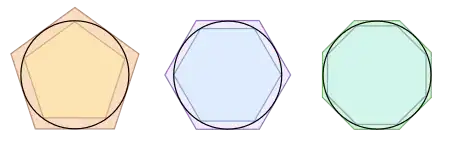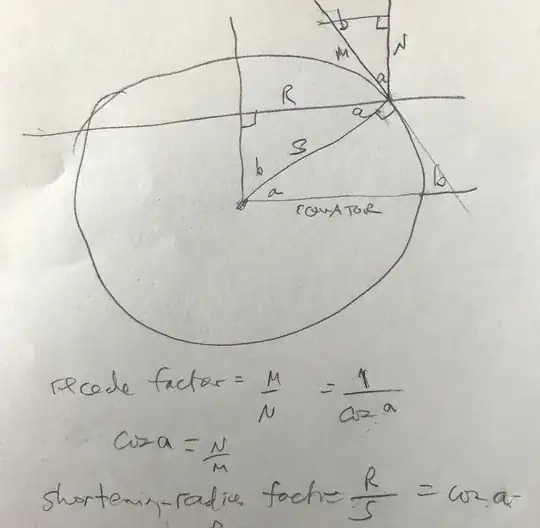I know what "surface area" means for:
- a 2d shape
- a cylinder or cone
but I don't know what it actually means for a sphere.
For a 2d shape
Suppose I'm given a 2d shape, such as a rectangle, or a triangle, or a drawing of a puddle. I can cut out a 1cm by 1cm piece of paper, and trace that piece of paper on the shape. Many full 1 cm squares will be traced on the shape, and there will likely be many partial squares traced on the edges of the shape. Suppose I can accept that I can "combine" the partial squares into full squares. Then I count the total number of full squares, to find the surface area.
For a cone or cylinder
I can convert a paper cone into two 2d shapes. The bottom of the cone is a circle. I can then cut the curved (ie not-bottom) part of the cone using scissors, and unfold that part into a flat 2d shape.
Similarly, I can convert a cylinder into flat 2d shapes: two circles and a rectangle.
For a sphere
But the above methods for understanding surface area don't work for a sphere. I can't lay a 1 cm by 1 cm piece of paper onto a sphere in a flat way. I can't even trace a square centimetre onto the sphere using that piece of paper!
People might say, "suppose you have an orange, and you peel the orange. Then you can lay the peel flat onto the table, into a flat 2d shape". But they're lying! The orange peel can never be mashed down perfectly flat onto the table!
So, I don't know what "surface area of a sphere" even means, if you cannot measure it using flat square pieces of paper!
What does "surface area of a sphere" even mean?




